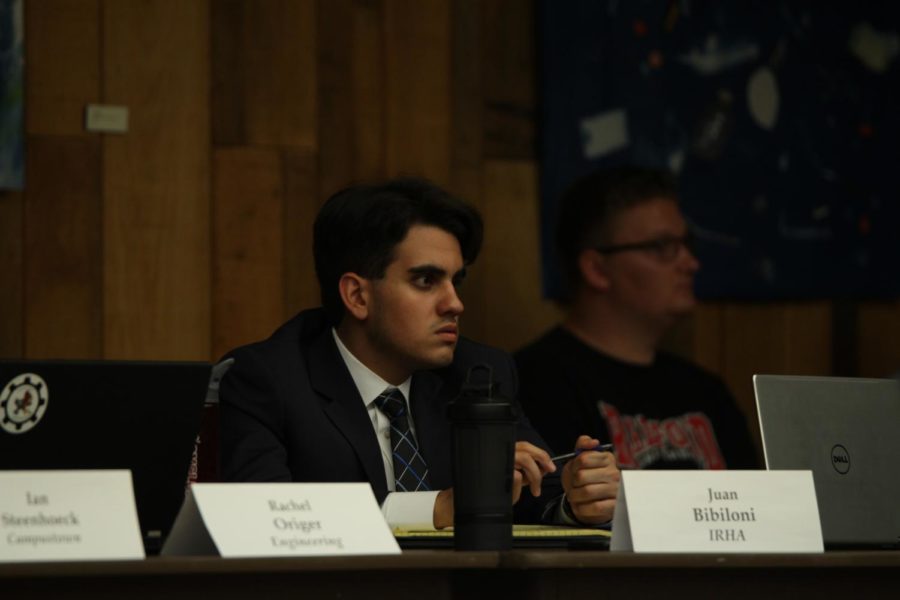- App Content
- App Content / News
- News
- News / Politics And Administration
- News / Politics And Administration / Campus
Student Government funds ‘Tree of Oppression’
Ashley Siegner/Iowa State Daily
Juan Bibiloni, senator for the Inter-Residence Hall Association, attends the Student Government meeting on Aug. 23, 2017.
October 18, 2017
Student Government funded an initiative proposed by the Diversity and Inclusion Committee that would purchase materials to create a “Tree of Oppression” on campus.
The aim of the “Tree of Oppression” being to “represent the macro- and micro-aggressive interactions marginalized students experience under institutionalized systems of oppression each day,” according to the legislation.
The micro- and macro-aggressions would be represented via plastic chains.
In introducing the idea of the tree, Bibiloni — who sponsored the legislation — compared it to a diversity and inclusion activity the senate participated in during its annual retreat in September.
During the activity, Student Government members were asked to take paper clips and build a chain based on one’s identity which inadvertently “created our own chains as to what represents us.”
“Think of this as taking it to a bigger scale,” Bibiloni said.
While the majority of the senators in attendance were in support of the “Tree of Oppression,” one senator was concerned about the message the word “oppression” may convey.
Sen. Jacob Schrader requested that Bibiloni explain why it is dubbed the “Tree of Oppression” compared to the “Tree of Awareness.”
“We want students to stop and think about it,” Bibiloni said, noting that oftentimes micro- and macro-aggressions are very real for some students on campus. “Students do sometimes feel oppressed when living out their identities.”
Schrader felt, however, that the strength of the word “oppression” would immediately turn people away from the initiative.
“I think instead of starting a conversation it ends it,” Schrader said.
Bibiloni disagreed, pointing to the white supremacy posters found on campus and the fear that it incites in students, faculty and staff each instance they appear.
“Oppression is the right word and I will defend it,” Bibiloni said.
Other questions gauged to Bibiloni regarding the “Tree of Oppression” included where the tree is intended to be located and how long the chains on the tree may stay on the tree.
Bibiloni said there are no exact details yet, however, as it is dependent on where the university says the tree can be located and how successful the initial event is.
Sen. Hannah Scott was concerned that if the chains were to stay on a tree for an extended period that they may be taken down or vandalized in some capacity.
Bibiloni said that the Diversity and Inclusion Committed discussed the possibility of this and should it happen, it would only serve as more of a reason to be having the discussion in the first place.
“To some extent, we want people to know these things are present on campus,” Bibiloni said.
In addition to the tree, the committee hopes to “elicit, implicit and explicit conversations surrounding these oppressive systems from populations that tend to ignore or conveniently avoid topics of social justice,” according to the legislation.
The funding request passed 20-1-1.







